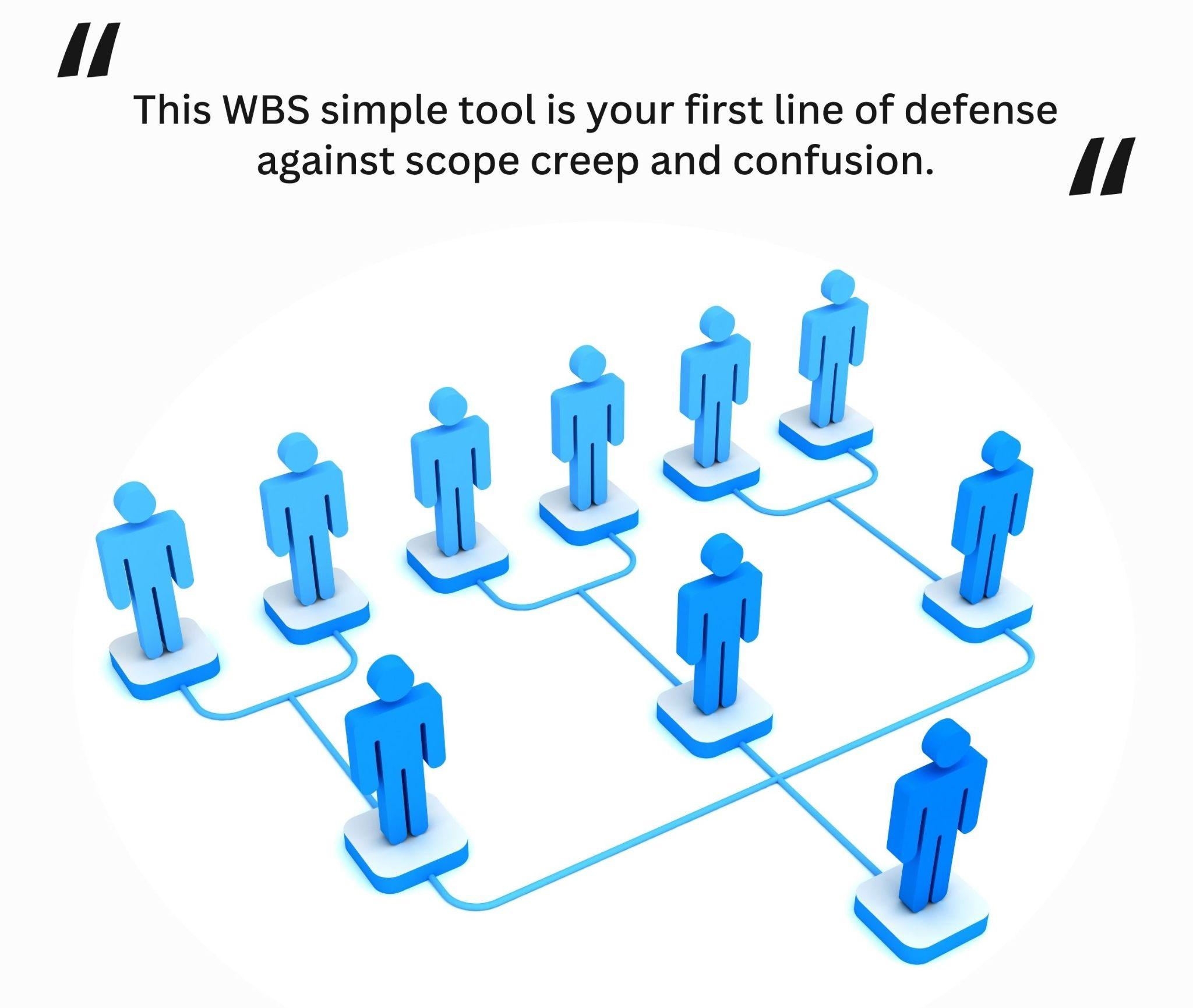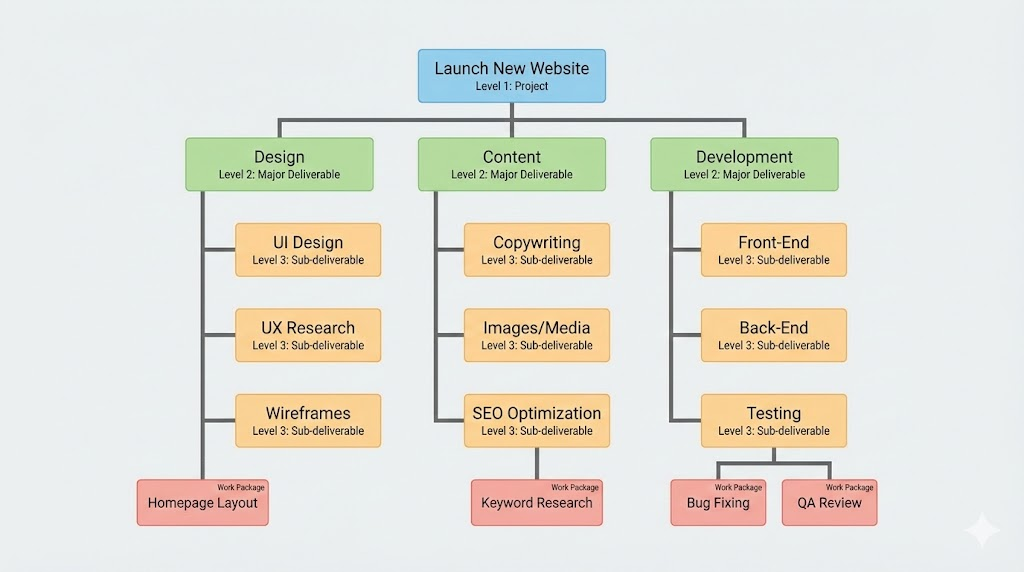Every project manager faces challenges: a massive project looms, deadlines feel tight, and the path forward seems unclear. Where do you start? The secret to transforming this overburden into an actionable plan lies in a powerful, foundational tool: the Work Breakdown Structure (WBS).
A Work Breakdown Structure (WBS) is a hierarchical decomposition of a project into smaller, more manageable components. It starts with the final project goal and breaks it down into deliverables and work packages. Consider it as creating a detailed map for your project journey, ensuring no step is missed. According to the Project Management Institute (PMI), a well-defined WBS is a critical element for project success, providing a clear framework for scope management. The same report underscores its value, revealing that poor project initiation and scope definition, which a WBS directly addresses, contribute to 39% of project failures.

What is a Work Breakdown Structure?
A WBS is a deliverable-oriented diagram. It is not a task list or a schedule, but a visual representation of the project’s scope. The Project Management Body of Knowledge (PMBOK) defines it as a “deliverable-oriented hierarchical decomposition of the work.” This means you begin with the end goal, like “Launch New Website,” and systematically break it down into major deliverables (e.g., Design, Content, Development), then into smaller sub-deliverables, until you reach “work packages.” These work packages are the smallest elements, small enough to be assigned, estimated, and tracked easily.

The Key Benefits of Using a WBS
Why go through the effort of creating a WBS? The benefits are profound. Firstly, it brings clarity and prevents overlap. By visually outlining all work required, your team knows exactly what they are responsible for, eliminating duplicate efforts. Secondly, it is the cornerstone for accurate planning. A detailed WBS allows for precise cost estimation, realistic scheduling, and effective resource allocation. Finally, it acts as a baseline for control. When scope changes are proposed, you can easily assess their impact against your WBS, helping you manage changes effectively instead of being derailed by them.
How to Create a WBS in 4 Steps
Creating a WBS is a logical, step-by-step process that any team can follow.

- Define the Project Goal:
- Start with the broader vision. What is the final product, service, or result? This is your Level 1.
- Identify Major Deliverables:
- Break the goal into its key components. For a website, this could be Sitemap & Wireframes, Written Content, and Functional Website. This is Level 2.
- Decompose into Sub-Deliverables:
- Break each major deliverable down into smaller components. Under “Functional Website,” you may have sections for Front-End Development, Back-End Development, and Third-Party Integrations. This is Level 3.
- Create Work Packages:
- Continue breaking down elements until you reach tasks that can be assigned to an individual or team. “Front-End Development” might be broken into “Code Homepage Layout” and “Implement Responsive Design.” These are your work packages.
If you are a professional aiming to deepen your practical knowledge of the Work Breakdown Structure (WBS), pursuing PMP certification training is a highly strategic move, and teaching the 100% rule and decomposition techniques to create a clear framework for planning, costing, and controlling any project.
Final Thoughts: Bringing Your WBS to Life
A WBS is not meant to be placed in a folder. It becomes the foundation for everything that follows. Use it to build your project schedule in a Gantt chart, assign tasks in your project management software, and track progress. By investing time in a Work Breakdown Structure, you replace uncertainty with a clear, actionable plan, setting your project and your team up for success from the very start.








